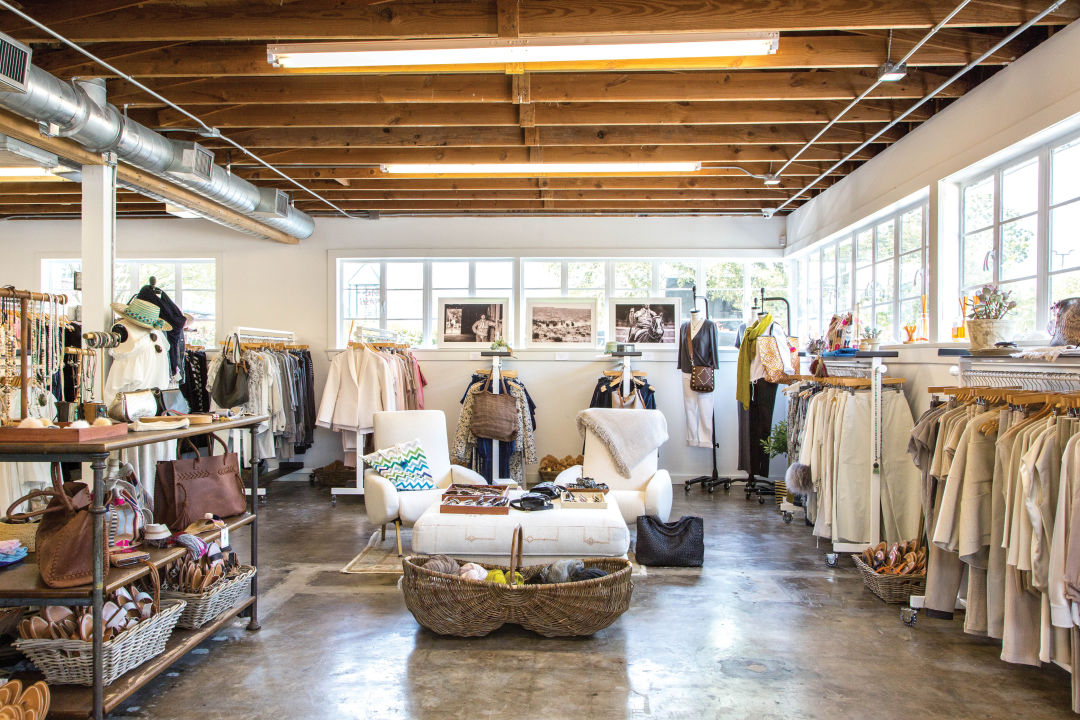Sustainable Fashion: Exactly How Eco-Friendly Clothing Is Shaping the Future of Style
As the style market deals with enhancing analysis over its ecological effect, the increase of lasting fashion supplies an appealing alternative that aligns design with eco-friendly duty. boutique fashion. How does this movement genuinely affect the future trajectory of style, and what challenges exist ahead in its prevalent fostering?
Innovative Sustainable Materials
As the fashion market grapples with its ecological influence, innovative sustainable products have actually emerged as a critical service for decreasing eco-friendly footprints. These materials not only lower dependence on fossil fuels however also decrease hazardous chemical usage and water consumption.
Along with plant-based products, innovations in biofabrication have caused the development of lab-grown textiles. Mycelium leather, originated from mushroom roots, offers a functional and eco-friendly alternative to animal leather. Its production leads to considerably lower carbon emissions and water usage, making it an extra sustainable option for stylist looking for to straighten with green techniques.
Recycled products are likewise acquiring grip, with polyester made from recycled plastic containers standing for a considerable innovation. This innovation not only draws away plastic waste from oceans and land fills however additionally reduces energy usage compared to creating virgin polyester. Together, these products highlight the possibility for an extra sustainable apparel industry, paving the way for environmentally conscious style and manufacturing.
Eco-Conscious Manufacturing
Building on the technologies in lasting products, the fashion market is also re-evaluating its production processes to further minimize environmental influence. Key strategies consist of reducing water consumption, decreasing carbon discharges, and getting rid of harmful chemicals. By taking on closed-loop systems, suppliers intend to recycle water and energy successfully, significantly diminishing waste. The assimilation of renewable resource resources, such as solar and wind power, into manufacturing facilities better curtails dependence on fossil fuels.
One more essential aspect is the reduction of hazardous chemicals traditionally used in dyeing and completing fabrics. Eco-conscious suppliers are shifting in the direction of plant-based dyes and waterless dyeing technologies, which not only secure neighborhood ecosystems however likewise enhance employee security. Technologies like electronic printing lower fabric waste and energy consumption, offering a cleaner alternative to conventional techniques.
With the development of blockchain technology, firms can currently offer detailed understandings into their supply chains, ensuring moral and ecologically friendly techniques at each step. As the need for eco-conscious items grows, suppliers are obliged to innovate, making sure that the future of fashion is both fashionable and sustainable.
The Rise of Upcycling
Upcycling, a transformative technique in sustainable style, involves artistically repurposing disposed of products right into new, high-grade products. This cutting-edge strategy not only reduces waste yet likewise lessens the demand for basic materials, therefore reducing the ecological effect of apparel production. By reimagining and rebuilding existing products, developers and fashion brand names are able to infuse creativity right into their collections while promoting ecological duty.

Furthermore, the upcycling movement has actually encouraged little companies and independent designers, who usually lead in advancement because of their agility and creative thinking. By profiting from the plentiful availability of extra materials, these entities contribute to a round economic climate, showing that style can be both stylish and lasting. With upcycling, the industry takes substantial strides towards an extra mindful and responsible future.
Thrift Society's Impact
The growing thrift society dramatically reshapes the landscape of lasting fashion, stressing the significance of mindful intake. This social change encourages customers to embrace previously owned clothing, therefore reducing the need for brand-new garment production and decreasing environmental effect. Second hand shopping not just expands the lifecycle of clothes however also lowers the carbon impact related my response to manufacturing, moving, and throwing away garments.
An essential element of second hand society is its democratization of fashion. By using a vast array of styles from different periods at inexpensive costs, second hand shops make style accessible to a wider target market. This access my review here cultivates a sense of individuality and imagination, as consumers mix and match special items to curate tailored closets without adding to the fast fashion cycle.
In addition, thrift society promotes circularity in fashion, aligning with the concepts of a circular economy. As more developers and consumers embrace thrift society, the fashion sector is forced to adjust, integrating lasting practices to meet the expanding demand for eco-conscious choices.

Future Trends in vogue
Fashion's evolution is significantly formed by technological developments and sustainability-driven campaigns. One noticeable fad is the increase of electronic style, where digital garments can be worn in augmented fact environments, considerably minimizing material waste.
Furthermore, the combination of blockchain technology provides brand-new opportunities in transparency and traceability, permitting customers to validate the sustainability qualifications of their garments. boutique fashion. This guarantees accountability in supply chains and advertises honest sourcing techniques. 3D printing is yet another advancement that assures to revolutionize producing processes by allowing on-demand manufacturing, consequently minimizing excess inventory and waste
Furthermore, the growth of bio-fabricated products, such as lab-grown leather and plant-based textiles, presents lasting alternatives to traditional materials. These innovations reduce reliance on pet items and resource-intensive crops. As these innovations grow, they are positioned to transform the fashion landscape, merging design with sustainability. The future of style, for that reason, hinges on a smooth mix of modern technology, advancement, and ecological obligation.
Conclusion
The makeover of the style industry via lasting check over here practices suggests an essential shift towards ecological liability. The assimilation of ingenious products, eco-conscious production techniques, and the embracement of upcycling and second hand society underscores a dedication to minimizing environmental footprints. As these practices get energy, they redefine the sector's narrative by prioritizing sustainable and moral options. This advancement not just straightens fashion with ecological sustainability however also sets a criterion for future fads concentrated on duty and advancement.
As the fashion sector faces enhancing analysis over its ecological impact, the rise of sustainable style supplies a promising alternative that lines up style with environmental duty.As the style industry grapples with its environmental influence, ingenious lasting materials have actually emerged as an important solution for minimizing ecological impacts. With each other, these materials underscore the possibility for an extra lasting fashion market, leading the means for ecologically conscious style and production.
Building on the technologies in lasting products, the style market is additionally re-evaluating its production procedures to additionally lower ecological influence. boutique fashion.Upcycling, a transformative technique in lasting fashion, includes creatively repurposing discarded materials right into brand-new, high-grade items